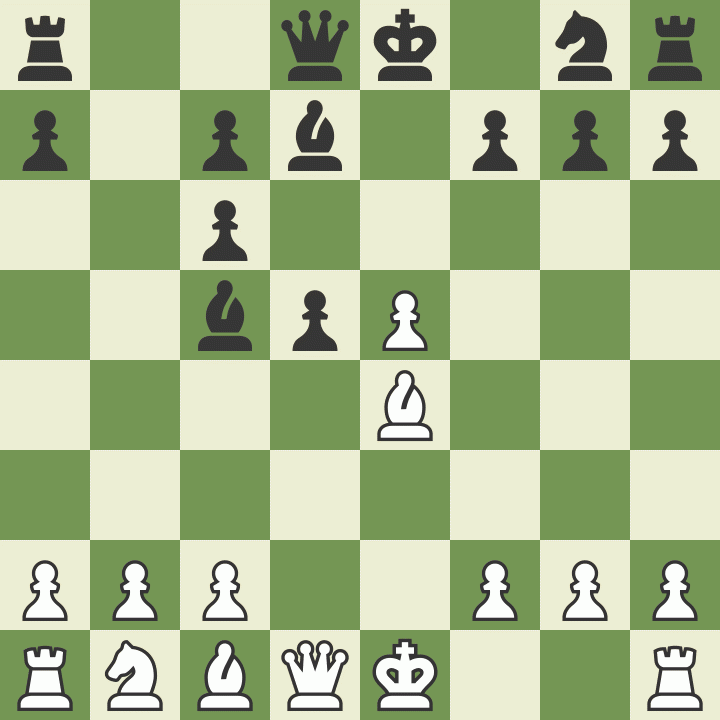
Zwischenzug
Have you ever calculated a beautiful combination in your head, played it, and then had your combination ruined by your opponent's surprise move that forced a reply? Don't worry—this happens even to grandmasters! Now and then, we all fall victim to the zwischenzug!
- What Is Zwischenzug?
- Why Is This Such A Powerful Concept?
- Examples Of Zwischenzug Moves By Famous Players
- Test Your Skills
- Conclusion
What Is Zwischenzug?
Zwischenzug, also known as "intermezzo" in Italian and "in-between move" in English, is an unexpected move that poses a severe threat and forces an immediate response. This type of move usually happens in-between exchanges or tactical combinations, and that is the reason for its name.
To make this concept easier to grasp, imagine the following position that you just reached as White. Black brings their bishop to start an attack on your king, expecting to get rid of your bishop and checkmate your king using their knight and queen. Little do they know that you have a surprise up your sleeve!
Why Is This Such A Powerful Concept?
Have you ever heard the quote, "Chess is 99% tactics"? Well, zwischenzug is one of the most potent tactical motifs you can use in a chess game! It carries so much strength precisely because it is, by definition, unexpected.
Applying a zwischenzug usually gives the player who is able to spot it an important extra tempo or, in some cases, even an extra piece! At the highest levels, even the smallest advantage can lead to victory. Can you imagine what an extra minor piece (or even a pawn) can do?
Look at this example from a game played by none other than Paul Morphy himself. On the 10th move, before capturing the bishop right away, he decided first to develop his queen, posing a much graver threat: checkmate! This move allowed him to gain an extra tempo and go on to win a comfortable game.

Examples Of Zwischenzug Moves By Famous Players
Throughout chess history, we can find many cases of beautiful intermezzo moves. One of the most famous of those moves, though, is one that never happened. The living legend GM Viswanathan Anand missed the opportunity to gain two pawns against the GM Magnus Carlsen during the World Championship in 2014.
Jose Raul Capablanca played another excellent example of an in-between move as Black against Aron Nimzowitsch in 1911. In this game, Nimzowitsch took Capablanca's knight, expecting him to take the bishop back. However, Capablanca saw another move that brought to White an inescapable threat of checkmate.
GM Vladimir Kramnik played one final example of zwischenzug in a rapid game against GM Levon Aronian in 2007. With a winning position in the endgame, Kramnik took advantage of Aronian's unprotected rook on b1. Instead of recapturing the pawn on c4 right away, he played the move Kc2, protecting his pawn on b2 and attacking his opponent's rook. The game ended then because Aronian saw no way of salvaging the position.
Test Your Skills
Now that you are aware of the concept of zwischenzug and its power, it is time for you to put your skills to the test. Try to solve the puzzles below and always remember the concept of the in-between move. If you can't find the answer, click the lightbulb icon to get a hint.
For this first puzzle, Black expects you to trade queens and check you with their knight. Can you find a better idea that takes advantage of your Black's unprotected king?
In the following example, Black has just played 1...Nxd4 which wins a pawn if White recaptures on d4 with the pawn or knight. Can you find a better move? Perhaps a zwischenzug?
Conclusion
Zwischenzug can be one of the most powerful tools in your chess arsenal! Calculating better than your opponent is always a great resource and one that will most likely get you closer to a win. Are you ready to start practicing your ability to spot in-between moves? Then head over to our puzzles section and practice winning the game using the power of the zwischenzug!







